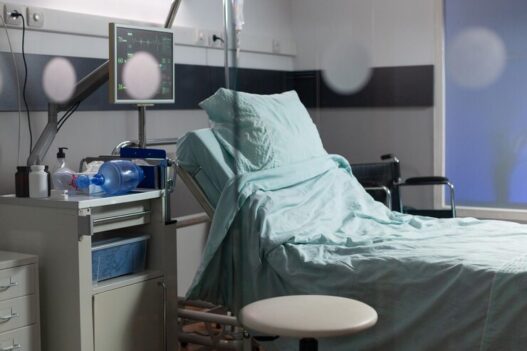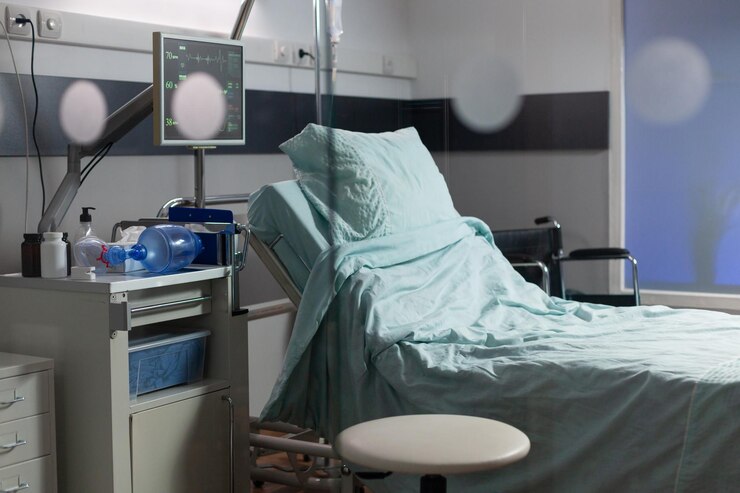Managing hospital beds is crucial to ensuring optimal patient care and hospital efficiency. In a populous country like India, where healthcare resources are often stretched, the workflow around hospital beds requires systematic and strategic handling to prevent overcrowding and improve patient outcomes. The workflow of patient hospital bed management in India? Here is a breakdown of the typical workflow and challenges faced in the Indian hospital bed management process.
1. Admission Process
The patient bed workflow begins with admission, which can occur in two main ways:
- Emergency Admissions: Patients brought in by ambulance or by family directly to the emergency department are assessed by the triage team. Based on the severity of the patient’s condition, the patient may be directed to the Intensive Care Unit (ICU), a general ward, or may require immediate surgical intervention.
- Elective Admissions: Patients scheduled for non-urgent procedures, tests, or treatments are often pre-registered. Pre-registrations involve the collection of medical history, consent forms, and other documentation to streamline admission when the patient arrives.
Once admitted, the patient is assigned a bed based on availability, the urgency of the medical condition, and sometimes the patient’s preference (if private or semi-private rooms are available and desired).
2. Bed Allocation
Bed allocation is a crucial step as it involves:
- Department Coordination: Based on the diagnosis and initial assessment, patients are allocated to specific departments. This might include ICUs, general wards, or specialty units (like cardiology or oncology).
- Availability Check: The hospital’s bed management team or a centralized system (if available) checks the real-time status of bed availability across all units.
- Patient Needs Assessment: Bed assignments consider the patient’s unique needs, such as the requirement for specialized equipment, isolation for infectious cases, or the need for immediate intervention.
Many large hospitals in India now employ digital bed management systems, enabling real-time tracking of available beds, reducing the delays associated with manual tracking and enhancing the speed of the allocation process.
3. Patient Transfer and Transportation
Once a bed is allocated, patients may need to be transported from the emergency room, surgical department, or other points of entry to their assigned bed. In large hospitals, patient transport services are responsible for ensuring patients are safely transferred with minimal wait time.
Challenges in Patient Transfer:
- Availability of Transport Staff and Equipment: Hospitals with limited staff face bottlenecks, especially during peak hours.
- Inadequate Infrastructure: Crowded hallways and restricted elevators can delay the transfer process, posing risks for critically ill patients who need prompt care.
4. In-Hospital Care and Bedside Management
Once the patient is settled into the bed, in-hospital care begins. This phase of the workflow includes ongoing patient monitoring, diagnostics, and treatment. Here’s how hospitals manage this stage:
- Bedside Medical Services: Nurses and doctors frequently visit patients to check vitals, administer medications, and perform necessary procedures.
- Equipment Management: Certain patients may require oxygen tanks, heart monitors, or ventilators. The availability and effective management of this equipment are essential for quality care.
- Patient Records and Documentation: Nurses and doctors keep meticulous records of the patient’s condition, test results, and treatment administered, often using digital health records to reduce errors.
Challenges in Bedside Management:
- Staff Shortage: Many hospitals in India face nursing shortages, especially during night shifts. This can impact the quality and consistency of patient care.
- Infection Control: In settings with multiple patients sharing rooms or facilities, managing infections is crucial. Compliance with hygiene protocols is necessary to prevent hospital-acquired infections (HAIs).
5. Bed Monitoring and Reassessment
Bed occupancy in hospitals is constantly monitored for efficient utilization. Regular reassessment helps determine if the patient requires a bed shift, transfer to a higher-level care unit, or can be discharged. The following steps are part of this phase:
- Regular Health Assessment: Doctors conduct daily or periodic evaluations of the patient’s recovery and response to treatment.
- Bed Transfer, if Needed: If the patient’s condition changes, they may be transferred to a different unit (e.g., from ICU to a general ward).
- Automated Alerts for Patient Monitoring: In hospitals with digital systems, alerts notify staff if certain patients need more frequent monitoring, preventing complications.
6. Discharge Planning and Process
When a patient is deemed fit for discharge, an organized process is followed to ensure that bed turnover is smooth:
- Discharge Coordination: The discharge team prepares all required paperwork, including doctor’s instructions, prescriptions, and post-discharge care information.
- Medication and Post-Care Advice: Nurses and doctors counsel patients on medications, lifestyle changes, and follow-up appointments.
- Bed Sanitization and Preparation for the Next Patient: Once vacated, the bed is thoroughly cleaned and sanitized, readying it for the next patient in line. Infection control protocols mandate deep cleaning, especially in ICUs, to prevent cross-infection.
Challenges in Discharge Process:
- Delay in Clearances: Discharge often requires multiple approvals from doctors, pharmacists, and the billing department, which can slow down the bed turnover rate.
- Post-Discharge Support: Many patients require follow-up support, which can be challenging for understaffed hospitals to coordinate effectively.
Key Challenges in Patient Bed Management in India
Several factors complicate patient bed workflow in India:
- High Patient Volume and Bed Shortages: Due to a high patient-to-bed ratio, many hospitals face constant bed shortages, particularly in government hospitals in densely populated urban areas.
- Limited Digital Infrastructure: While many private hospitals have implemented digital bed management systems, government hospitals often rely on manual tracking, which can lead to delays.
- Inconsistent Staff-to-Patient Ratio: Shortage of medical personnel, particularly nurses, exacerbates the challenge of providing timely and quality bedside care.
- Funding Constraints: Underfunded public hospitals have limited resources for regular upgrades, such as additional beds, newer equipment, or enhanced sanitation facilities.
Innovations and Solutions in Bed Management
- Digital Bed Management Systems: Leading hospitals in urban centers have adopted centralized digital bed management systems to optimize bed usage, reduce wait times, and ensure prompt patient care. These systems provide real-time tracking and allow better forecasting of bed needs.
- Telemedicine Integration: Telemedicine has allowed patients to receive some aspects of care remotely, reducing hospital admissions and freeing up beds for those in critical need.
- Public-Private Partnerships (PPPs): The government has partnered with private players to enhance bed capacity and manage patient influx in government hospitals.
- Mobile Health (mHealth) and Remote Monitoring: Mobile applications and wearable devices enable remote patient monitoring, helping hospitals discharge patients sooner and track their recovery, which also reduces bed occupancy rates.
Conclusion
At Penta Surgicals, the patient hospital bed workflow in India is an intricate process that balances patient care, resource allocation, and hospital efficiency. Managing this workflow involves multiple stakeholders and a mix of manual and digital systems, particularly in larger hospitals. Despite numerous challenges, including high patient volumes and bed shortages, the gradual adoption of technology and improved hospital infrastructure is enhancing bed management in India.










